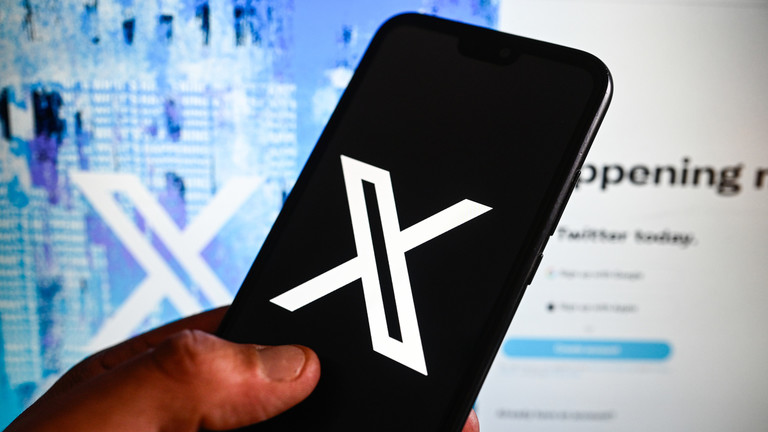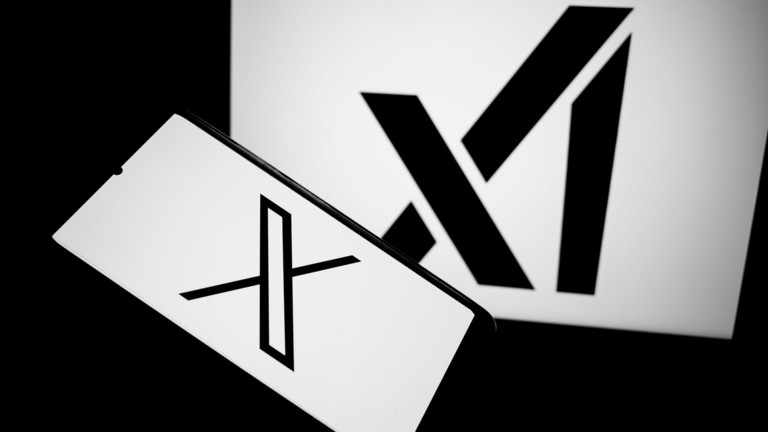
This article is more than
2 year oldOpinion Why Elon Musk rebranded Twitter with our most mysterious letter

Johanna Drucker is Breslauer professor and distinguished professor emerita in information studies at UCLA. She is the author of “Inventing the Alphabet: The Origins of Letters from Antiquity to the Present.”
“I like the letter X,” Elon Musk posted, shortly after he renamed and rebranded Twitter. “X will become the most valuable brand on Earth.” X? Can you imagine Musk picking J for the job? Or H? There would be puzzlement, as there is now, and not much else. But X also creates a certain frisson. Why?
The letter X carries so many connotations — many more than almost any other letter — though it was not among the original alphabetic signs in the Proto-Canaanite script that stabilized around 1700 B.C. Long before then, however, human sign systems consisted of very basic marks — stick figures for humans and animals, straight lines for tallies, circles, crosses and X signs. They show up on prehistoric masonry in Crete; they show up in prehistoric Byblos in Syria; they show up on stones marked between 20,000 and 10,000 years ago in the French area of Mas d’Azil.X, in other words, was a sign before it was a letter — one that appears everywhere. Even a child, asked to invent a script, will include an X or other crosses.
The modern letter X derives from the Semitic sign “samekh” and was the 15th letter in the original alphabetic sequence. It consisted of a single vertical line with three horizontal bars, a fairly complicated sign compared with the circle, simple zigzags or letters of fewer strokes. The samekh represented the “s” sound, but when adopted by the Greeks, it was used to represent “xi.”
Twitter removing the little blue bird is about more than a logo
The Romans approached letterforms with the same formal precision they brought to engineering roads, arches and aqueducts. Roman letters have a geometric quality based on systems of carefully designed and executed proportion. And the Romans were the ones who created the more monumental, two-stroke X and moved it to the 24th place in the alphabet and let it designate a sound closer to “ks.”
Letter forms shift — just like costume — depending on whether they are made with pen, brush, chisel or other materials. But, remarkably, the sequence of letters, the sounds they represent and their names remain quite stable across millennia. Moving a letter to a different place in the alphabet was therefore dramatic and happened very little.
What about the symbolic values associated with the letter? It seems to suggest mystery — in the sense of “Who is Madame X?” X began its career as an algebraic sign for the unknown, the value that had to be calculated, in the 16th century, when Europeans adopted Persian mathematics. Descartes is responsible for putting the X and Y designations on axes to graph values. X also has the power of multiplication and is used in designating dimensions in measures of space — 10x10.
The mystery of X and its power also derive from the acts of deletion, crossing out and negation with which it is associated. The cancellation power of two bold strokes across a sheet of paper or an image is irrefutable. French writer Victor Hugo had his own idiosyncratic interpretations of letters and saw X as crossed swords in combat with an unknown outcome, not quite a negation but hardly positive. Who, or what, will be canceled in the struggle?
The demise of Twitter — er, ‘X’ — proves capitalism is alive and well
Keep in mind that X is the sign used by illiterates when asked to make “their” mark, when someone who cannot write alphabetically has to leave a sign of agreeing to a contract. X was adopted by Malcolm Little to represent his unknown African name and stand for his missing, lost, tribal affiliation. X marks loss, something absent, but also stands for kisses in the final line of a message.
In the Middle Ages, some official church documents were sealed with an X as a sign of faith. X is often used to designate the Christian symbol — and as an abbreviation — e.g., Xmas. There is a double resonance of the Chi-Rho symbol of Christ and the symbol made from the Greek letters including a cross.
In the world of commerce, because of X’s association with “Xtra,” it seems to suggest something Xceptional or Xtradordinary — a specialness that cannot quite be specified even though it adds value. In “X marks the spot,” it serves as a conspicuous sign. Something has been designated, noted, through a deliberate act that cannot be confused with natural tracks. Perhaps that designatory power — my sign, my mark — is the gesture of X most likely to appeal to the self-promotional Musk.




